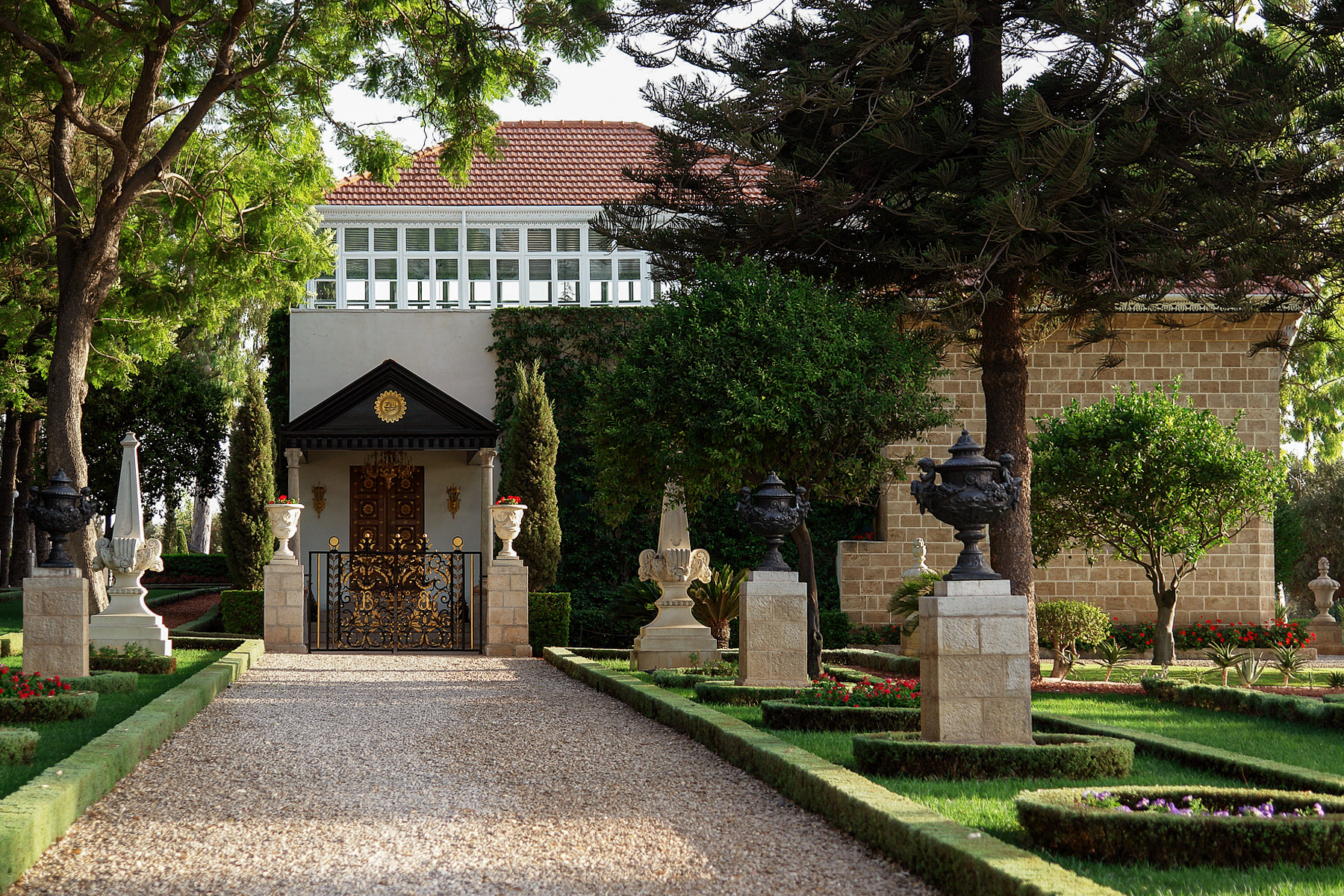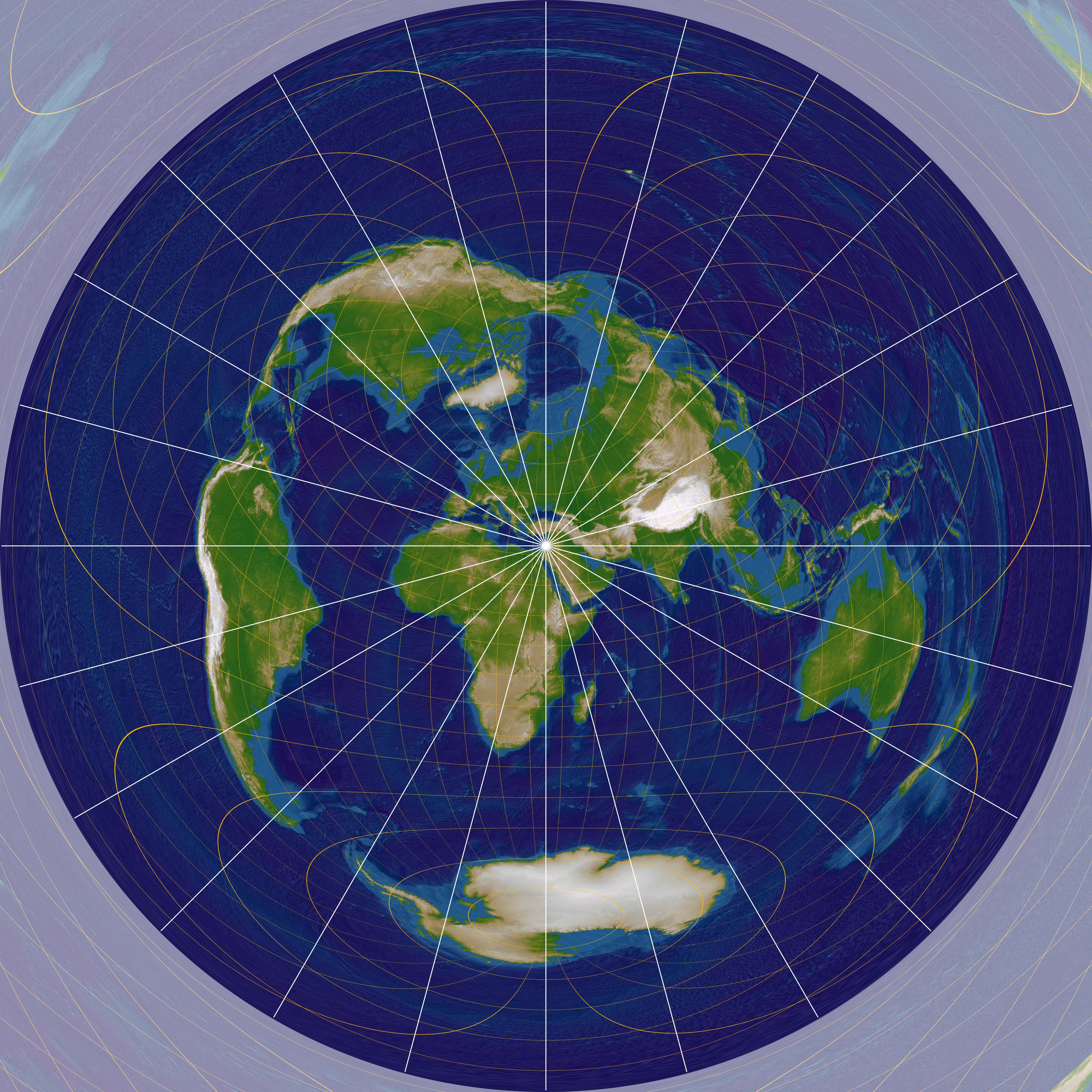Qiblih on:
[Wikipedia]
[Google]
[Amazon]
__NOTOC__

 In the
In the
Excerpts from the Kitáb-i-Aqdas regarding the QiblihFind the direction to Bahji with Google Maps
{{Baháʼí Bahá'í prayer Orientation (geometry) fr:Qiblih

 In the
In the Baháʼí Faith
The Baháʼí Faith is a religion founded in the 19th century that teaches the essential worth of all religions and the unity of all people. Established by Baháʼu'lláh in the 19th century, it initially developed in Iran and parts of the ...
the Qiblih ( ar, , "direction") is the location to which Baháʼís face when saying their daily obligatory prayers. The Qiblih is fixed at the Shrine of Baháʼu'lláh, near Acre
The acre is a unit of land area used in the imperial and US customary systems. It is traditionally defined as the area of one chain by one furlong (66 by 660 feet), which is exactly equal to 10 square chains, of a square mile, 4,840 square ...
, in present-day Israel
Israel (; he, יִשְׂרָאֵל, ; ar, إِسْرَائِيل, ), officially the State of Israel ( he, מְדִינַת יִשְׂרָאֵל, label=none, translit=Medīnat Yīsrāʾēl; ), is a country in Western Asia. It is situated ...
; approximately at .
In Bábism
Bábism (a.k.a. the Bábí Faith; fa, بابیه, translit=Babiyye) is a religion founded in 1844 by the Báb (b. ʻAli Muhammad), an Iranian merchant turned prophet who taught that there is one incomprehensible God who manifests his will in ...
the Qiblih was originally identified by the Báb
The Báb (b. ʿAlí Muḥammad; 20 October 1819 – 9 July 1850), was the messianic founder of Bábism, and one of the central figures of the Baháʼí Faith. He was a merchant from Shiraz in Qajar Iran who, in 1844 at the age of 25, claimed ...
with " the One Whom God will make manifest", a messianic figure predicted by the Báb. Baháʼu'lláh
Baháʼu'lláh (born Ḥusayn-ʻAlí; 12 November 1817 – 29 May 1892) was the founder of the Baháʼí Faith. He was born to an aristocratic family in Qajar Iran, Persia, and was exiled due to his adherence to the messianic Bábism, Bábí ...
, the Prophet-founder of the Baháʼí Faith claimed to be the figure predicted by the Báb. In the Kitáb-i-Aqdas
The Kitáb-i-Aqdas (Arabic: The Most Holy Book) is the central religious text of the Baháʼí Faith, written by Baháʼu'lláh, the founder of the religion, in 1873. Though it is the main source of Baháʼí laws and practices, much of the con ...
, Baháʼu'lláh confirms the Báb's ordinance and further ordains his final resting-place as the Qiblih for his followers. ʻAbdu'l-Bahá
ʻAbdu'l-Bahá (; Persian: , 23 May 1844 – 28 November 1921), born ʻAbbás ( fa, عباس), was the eldest son of Baháʼu'lláh and served as head of the Baháʼí Faith from 1892 until 1921. ʻAbdu'l-Bahá was later canonized as the ...
describes that spot as the "luminous Shrine", "the place around which circumambulate the Concourse on High". The concept exists in other religions. Jews face Jerusalem, more specifically the site of the former Temple of Jerusalem
The Temple in Jerusalem, or alternatively the Holy Temple (; , ), refers to the two now-destroyed religious structures that served as the central places of worship for Israelites and Jews on the modern-day Temple Mount in the Old City of Jerusa ...
. Muslims face the Kaaba
The Kaaba (, ), also spelled Ka'bah or Kabah, sometimes referred to as al-Kaʿbah al-Musharrafah ( ar, ٱلْكَعْبَة ٱلْمُشَرَّفَة, lit=Honored Ka'bah, links=no, translit=al-Kaʿbah al-Musharrafah), is a building at the c ...
in Mecca, which they also call the ''Qibla
The qibla ( ar, قِبْلَة, links=no, lit=direction, translit=qiblah) is the direction towards the Kaaba in the Sacred Mosque in Mecca, which is used by Muslims in various religious contexts, particularly the direction of prayer for the ...
'' (another transliteration of Qiblih).
Baháʼís do not worship the Shrine of Baháʼu'lláh or its contents, the Qiblih is simply a focal point for the obligatory prayers. When praying obligatory prayers the members of the Baháʼí Faith face in the direction of the Qiblih. It is a fixed requirement for the recitation of an obligatory prayer, but for other prayers and devotions one may follow what is written in the Qurʼan: "Whichever way ye turn, there is the face of God."
Burial of the dead
"The dead should be buried with their face turned towards the Qiblih. This also is in accordance with what is practiced inIslam
Islam (; ar, ۘالِإسلَام, , ) is an Abrahamic monotheistic religion centred primarily around the Quran, a religious text considered by Muslims to be the direct word of God (or '' Allah'') as it was revealed to Muhammad, the ...
. There is also a congregational prayer to be recited. Besides this there is no other ceremony to be performed" (From a letter written on behalf of Shoghi Effendi
Shoghí Effendi (; 1 March 1897 – 4 November 1957) was the grandson and successor of ʻAbdu'l-Bahá, appointed to the role of Guardian of the Baháʼí Faith from 1921 until his death in 1957. He created a series of teaching plans that over ...
to an individual believer, July 6, 1935).
See also
*Qibla
The qibla ( ar, قِبْلَة, links=no, lit=direction, translit=qiblah) is the direction towards the Kaaba in the Sacred Mosque in Mecca, which is used by Muslims in various religious contexts, particularly the direction of prayer for the ...
, the Islamic equivalent of the Qiblih
* Ad orientem, the Christian practice of facing east in prayer, also informs orientation of many church building
* Mizrah, the Jewish practice of praying facing the Temple Mount
The Temple Mount ( hbo, הַר הַבַּיִת, translit=Har haBayīt, label=Hebrew, lit=Mount of the House f the Holy}), also known as al-Ḥaram al-Sharīf (Arabic: الحرم الشريف, lit. 'The Noble Sanctuary'), al-Aqsa Mosque compou ...
in Jerusalem
Jerusalem (; he, יְרוּשָׁלַיִם ; ar, القُدس ) (combining the Biblical and common usage Arabic names); grc, Ἱερουσαλήμ/Ἰεροσόλυμα, Hierousalḗm/Hierosóluma; hy, Երուսաղեմ, Erusałēm. i ...
Citations
References
* *External links
Excerpts from the Kitáb-i-Aqdas regarding the Qiblih
{{Baháʼí Bahá'í prayer Orientation (geometry) fr:Qiblih